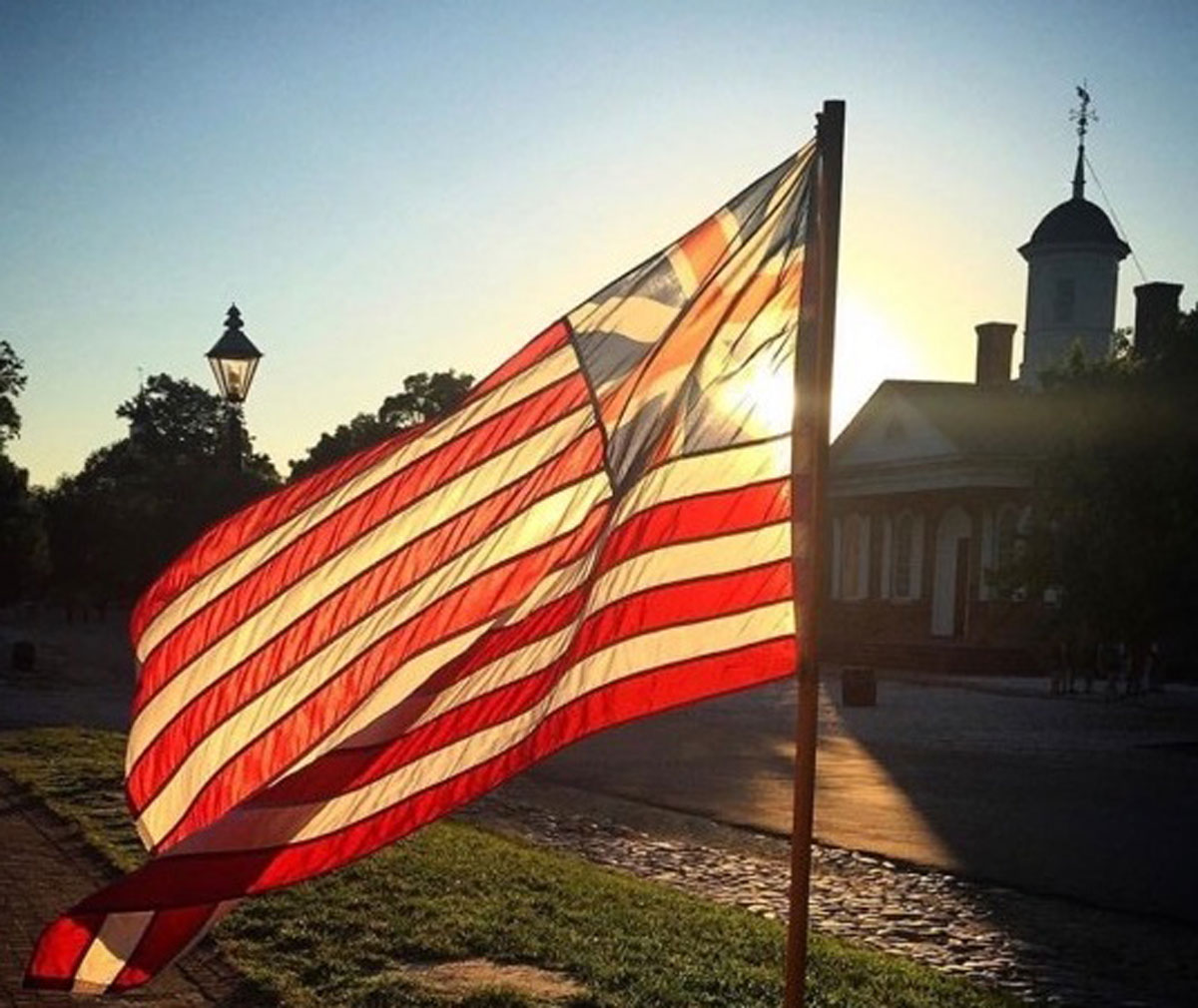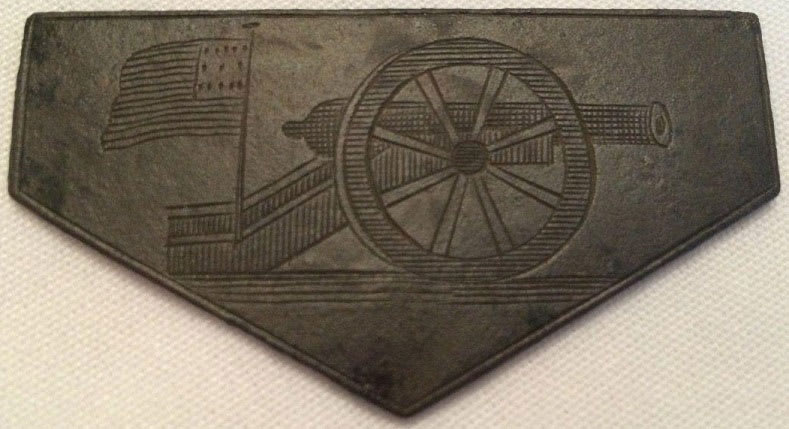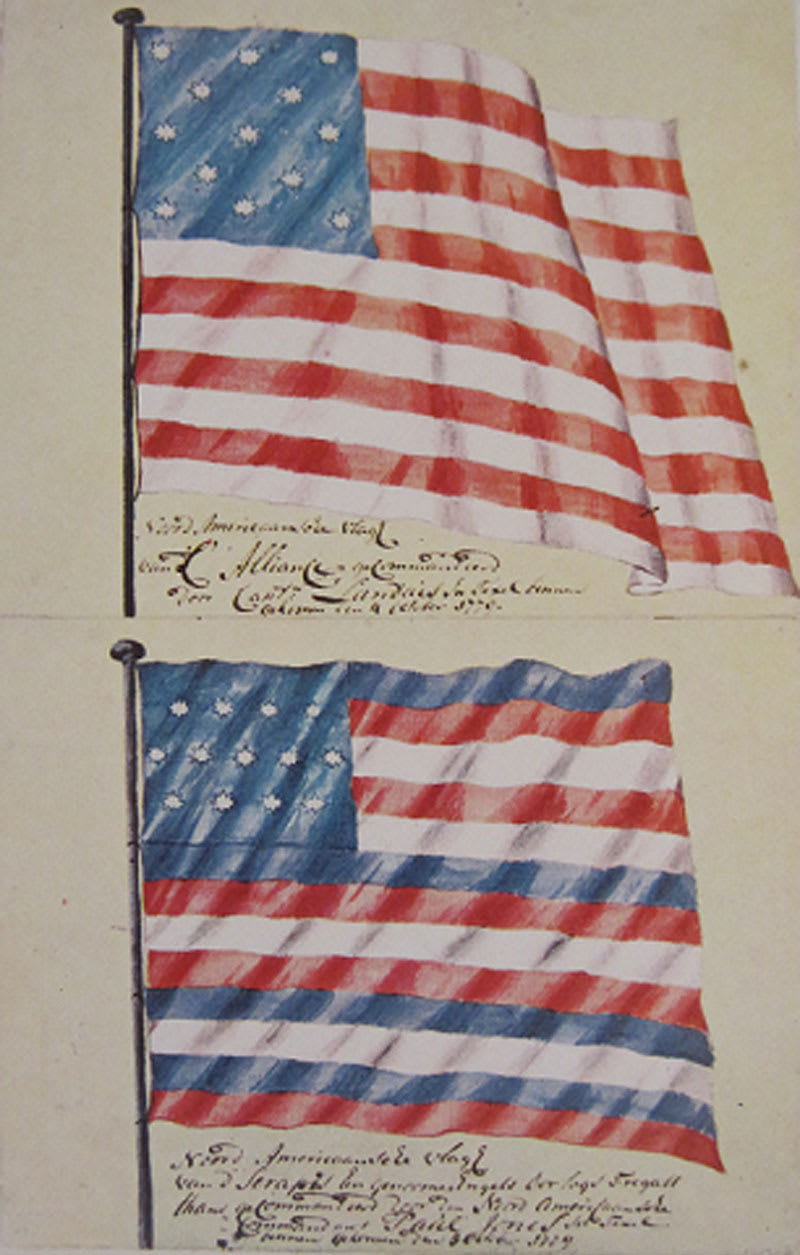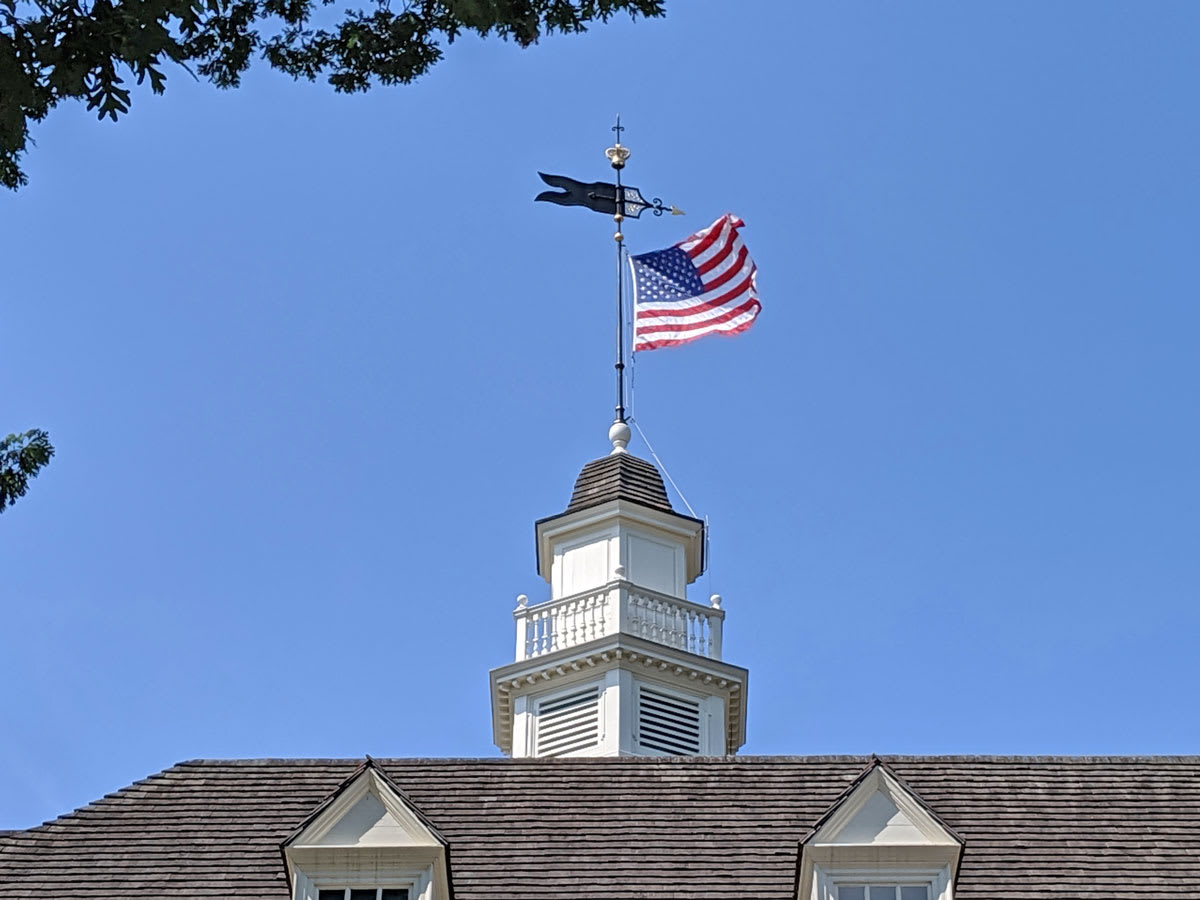The evolution of the American flag reflects the evolution of the American nation.
According to the Virginia Gazette, on May 16, 1776, the day after the Virginia Convention unanimously passed a resolution for independence, “a continental union flag was displayed upon the Capitol” amidst the celebratory military exhibitions and the illumination of houses that took place. The Continental Union flag, popularly known as the “Grand Union” today was raised over the flagship of the Continental Navy on December 3, 1775 by John Paul Jones and over General George Washington’s encampment in Massachusetts on January 1, 1776. This same flag is used daily to indicate open exhibit sites at Colonial Williamsburg. While the Continental Union is often thought of as the first American flag, it was never officially adopted by the Continental Congress.

The design for an official flag was not decided upon until the American Revolution was two years old. On June 14, 1777, the Continental Congress “Resolved: That the flag of the [thirteen] United States be thirteen stripes alternate red and white, that the Union be thirteen stars in a blue field representing a new constellation.” Flag Day is observed every year to honor this resolution.
American folklore holds that General George Washington along with George Ross and Robert Morris from the Continental Congress approached Philadelphia upholsterer Betsy Ross (widow of George’s nephew John) to produce the first American flag with stars and stripes in the spring of 1776. This account first appeared in print around 1870 when Ross’s grandchildren shared their “family tradition,” but there is no documentary evidence beyond family oral accounts to support it. It is known that Betsy Ross was employed during the Revolution making flags for the Continental Army and Navy (as were Rebecca Young, Margaret Manney, and Sarah Barry), but the maker of the first “Stars and Stripes” remains unknown. Even the wreath-shaped pattern of stars commonly associated with Ross is not documented before 1782.

So, who did make the first American flag with stars and stripes? Ross biographer Marla Miller wrote that seeking to identify a “first” flag maker makes the American Revolution seem too “orderly,” rather than the “desperate, ad hoc scramble” it really was. She made an excellent point (and wrote an excellent biography of Ross, by the way), but 18th-century people nonetheless attempted to claim the honor of being first. In 1780, a signer of the Declaration of Independence named Francis Hopkinson petitioned Congress for a “Quarter Cask of the Public Wine” for designing the American flag and other pieces of heraldry. His petition was promptly denied, in part because Hopkinson “was not the only person consulted on those exhibitions of Fancy.”

Throughout the American Revolution, the Stars and Stripes appeared on belt tips, buttons, paintings, maps, currency, and of course the colors flown by military units. Variations in the flag’s design were numerous. Some (such as Hopkinson’s) featured stars in alternating rows of three and two, four and five, or arranged in a rectangle. The stars might be shaped with five, six, or even eight points. Some flags had a white stripe at the top and others red; in 1778, John Adams and Benjamin Franklin informed a Neapolitan ambassador that “the flag of the United States consists of thirteen stripes, alternately red, white, and blue.” In October 1779, two Continental Navy ships moored alongside one another flew two different versions of the Stars and Stripes. Whatever medium they were displayed in and where, all these flags represented the early United States.
Once American independence was secured, the nation’s flag continued to evolve. A 1794 Flag Act added one star and stripe to honor both Vermont and Kentucky joining the Union ... it was the only iteration of the Flag of the United States to have more than thirteen stripes. An 1818 Flag Act limited the number of stripes to thirteen (for the original Colonies) but added a star on July fourth after each new state joined the Union. The current 50-star flag was adopted on July 4, 1960 with the admission of Hawaii. Interestingly, the arrangement of stars on the flag was not formalized until 1912, resulting in multiple designs into the early twentieth century.

The Continental or Grand Union flag flies to welcome guests into open sites. The flag was chosen primarily to reflect the period interpreted in the Historic Area, but it also serves as a reminder that the ideas, struggles, and lessons of the past can still be relevant today. As always, Colonial Williamsburg interpreters will provide guests with an unfiltered view of our complicated past, including painful aspects that resonate still today. While some parts of our past are to be celebrated, others require closer examination with resulting negative legacies remedied through protest and change.
The Continental Union and the many iterations of the Stars and Stripes flags that followed have flown over and represent the entire spectrum of our complex history. As the American flag has evolved, our nation has continued to evolve along with it. The circumstances of 1776 are not the same as those of today. Where has our nation come from? Where is it now? Where is it going? What our nation and the flag that represents it will look like in the future is up to you.
(The author wishes to thank his colleagues Josh and Chrystal Bucchioni for sharing their expertise and encouraging his own flag research.)
Michael Romero is a Colonial Williamsburg Interpreter working in both Orientation and Public Sites. Since 2016, he has been working to bring 18th-century naval history to life. Michael has published work in Naval History magazine and NAI’s Legacy, and is working toward a master’s degree in Military History from American Public University.
Further Reading
Mastai, Boleslaw and Marie-Louise D’Otrange. The Stars and the Stripes: The American Flag as Art and as History from the Birth of the Republic to the Present. New York: Alfred A. Knopf: 1973.
Miller, Marla R. Betsy Ross and the Making of America. New York: Henry Holt & Company, 2010.
Resources
“Evolution of the United States Flag.” Chamber of Commerce. https://www.chamberofcommerce.org/usflag/history/flagevolution.html.
“Lt. John Paul Jones Raised 1st American Flag Over U.S. Vessel.” The Sextant: Taking a Fix on the History and Heritage of Today’s U.S. Navy. https://usnhistory.navylive.dodlive.mil/2013/12/03/lt-john-paul-jones-raised-1st-american-flag-over-u-s-vessel/.
“The Continental Colors/Grand Union Flag.” Historical Flags of Our Ancestors. http://www.loeser.us/flags/american_note_3.html.
“Williamsburg.” Virginia Gazette (Dixon & Hunter), May 18, 1776. https://research.colonialwilliamsburg.org/DigitalLibrary/va-gazettes/VGSinglePage.cfm?issueIDNo=76.DH.22&page=3&res=LO.
Journals of the Continental Congress, Volume VIII: 1777. Washington: Government Printing Office, 1907.
Journals of the Continental Congress, Volume XVIII: 1780. Washington: Government Printing Office, 1910.
Mastai, Boleslaw and Marie-Louise D’Otrange. The Stars and the Stripes: The American Flag as Art and as History from the Birth of the Republic to the Present. New York: Alfred A. Knopf: 1973.
Miller, Marla R. Betsy Ross and the Making of America. New York: Henry Holt & Company, 2010.
Romero, Michael. “What Does the Flag Say About Us?” Legacy 30, no. 1 January/February 2019): 28-30.
Wharton, Francis, ed. The Revolutionary Diplomatic Correspondence of the United States, Volume II. Washington: Government Printing Office, 1889.